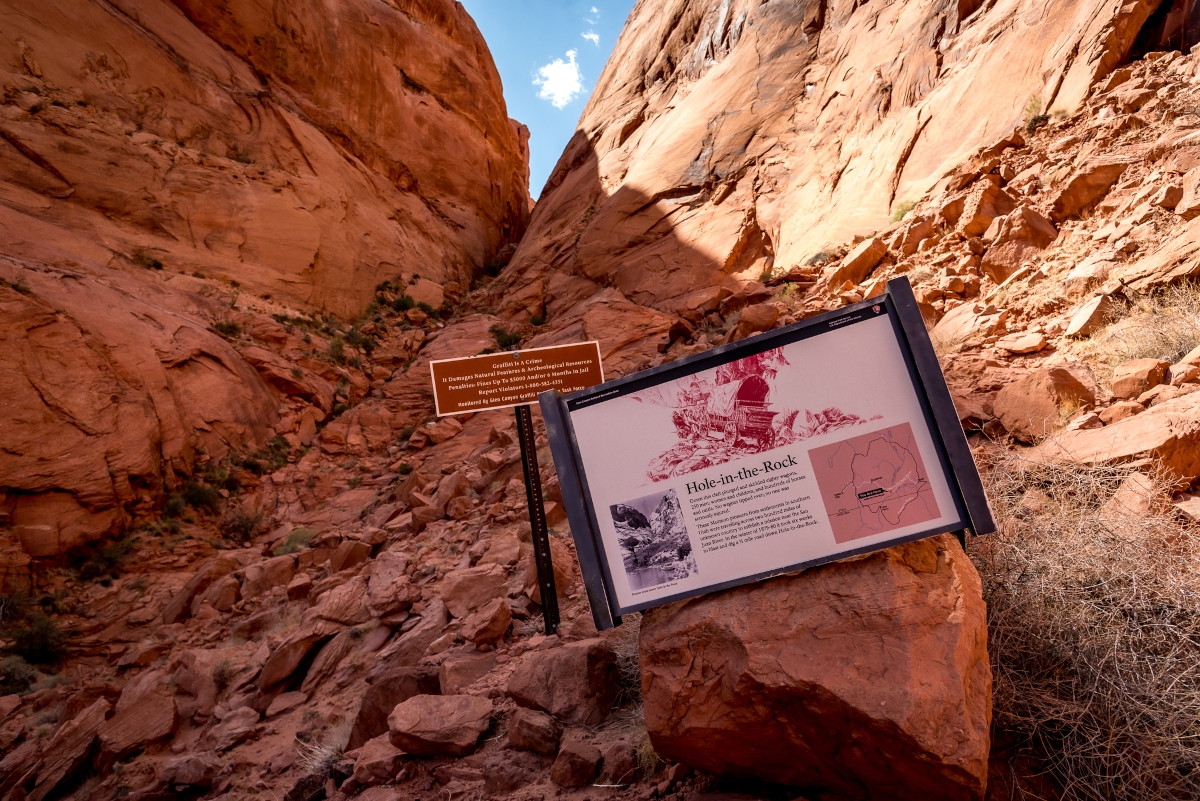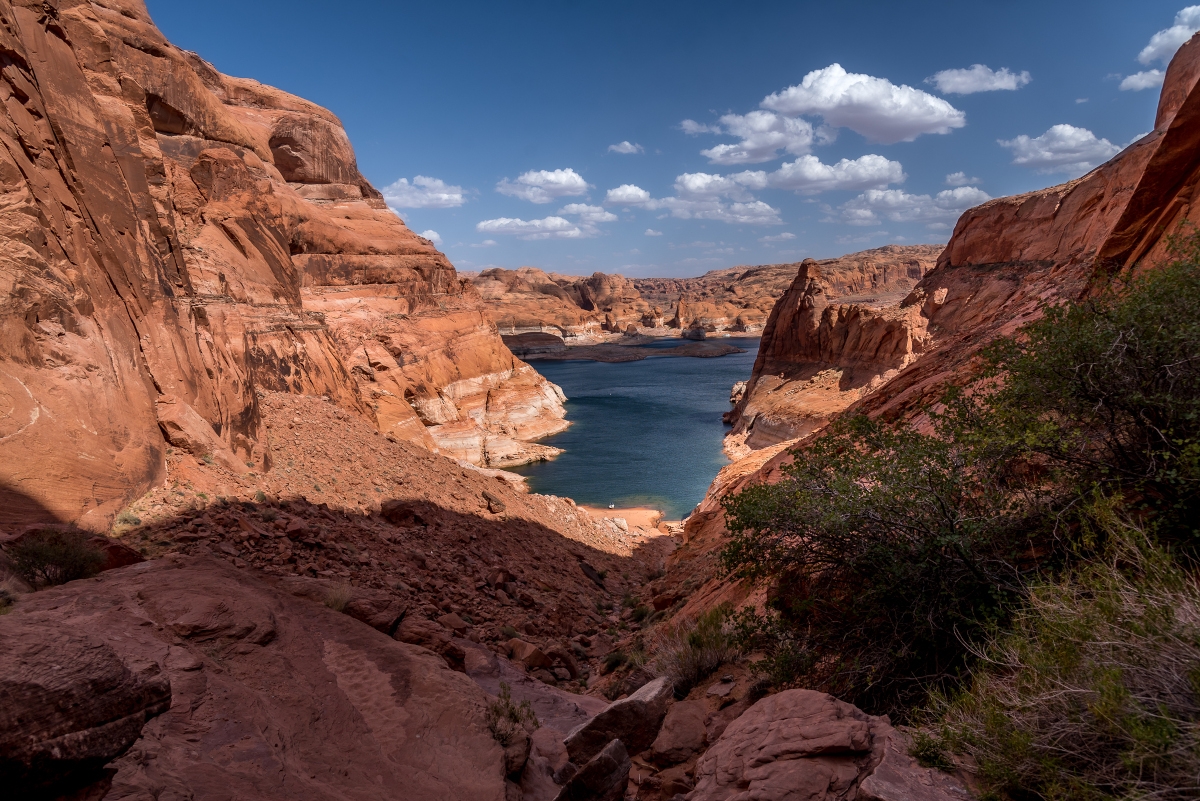Hole in the Rock
The Roads Less Traveled
We have discovered through the years as guides and tourism consultants that tourists coming to visit the parks generally stay on the well-known routes and hiking trails. We can predict with a fair amount of accuracy where people go, the routes they take, how they plan their visit, and the trails they hike, especially at the national parks. We often see the same buses and people at all the stops we make on tours we guide. On our personal time we prefer taking the roads and trails less known and traveled. Hole-in-the-Rock is one such route.
Tourists follow pavement. Get off the pavement, lose the crowd!
Hole in the Rock History
Hole-in-the-Rock isn’t just a name, place, or backroad, it’s also an important historic event that set the course for the settling of the Four Corners region.
Late in 1879, Mormon settlers from southwestern Utah were organized to settle a new part of the Utah territory in what is now southeastern Utah. What was planned to be a six-week journey became a treacherous six-month venture, for approximately 250 pioneers who endured 200 miles of the most grueling terrain in Utah.
A diary entry from a member of the trek described the terrain as not being fit for even a bird to fly over!
The Pioneers had a relatively easy time of it as they followed a course that is now known as the Hole in the Rock road to a point on the cliffs above the Colorado River where they believed they could lower their wagons and cross the river on rafts.
The pioneers took on the challenge by blasting and carving their way through a notch in the canyon wall, and building a very steep road, of sorts, to the river’s edge. The pioneers called the crevice Hole in the Rock, and with great time investment and effort, they managed to transport their supplies, 250 wagons, and over 1000 head of livestock down through the notch. Once at the bottom of the canyon they crossed the river, and then created a road out the other side of the canyon. The hardest parts of the trek were still ahead of them between what is now Lake Powell and the community of Bluff, Utah.
In recent years the Escalante Hole in the Rock Heritage Center has been built and is a nine-acre heritage site sits along Scenic Byway 12 in Escalante, Utah. The plaza includes large murals that illustrate the Hole in the Rock
EscalanteHeritageCenter.org.
The Road Today
The entrance to The Hole in the Rock road is located five miles east of the town of Escalante on Highway 12. From the turnoff to the end of the road is about 55 miles. The road is graded dirt suitable for most vehicles; however, it’s generally quite wash boarded as are most back country graded roads in Utah. You’ll want to tighten your dentures when it gets this way. The county occasionally blades the road but it doesn’t take long for the washboard to re-develop.
Many visitors venture down this road to hike into slot canyons such as Peek-a-boo, Spooky, Egypt, Coyote Gulch, Zebra Canyon, and more. Also along this road is Devil’s Garden which is very much a natural play-land for adults and kids with its curious rock formations and arches.
In the Coyote Gulch section of Escalante Canyon, Stevens Arch is one of many impressive formations with a 220-foot span. This so-called shelter arch is found at the junction of Coyote Gulch and Stevens Canyon, which can also be accessed from below at Lake Powell. Low water is now making this a much longer hike from lakeside.

Hole in the Rock Trail
You can hike the pioneer route carved through the crevasse that leads down to Lake Powell. You can still see marks in the rocks where the wagons scraped the sides. Farther down the route are steps caved out by early traders and trappers who used the route for transporting supplies and trade goods.
Boulders have since fallen choking sections of the route with routes bypassing or going underneath the rocks. The trail is steep with some scrambling requiring foot and hand holds. It’s a fun and adventurous hike with amazing view of Lake Powell below.
For maps and information on trails, campsites, and points of interests, stop at the Grand Staircase Escalante National Monument visitor center in Escalante. *Remember backpacking permits are required from the BLM for overnight camping in this area.




Leave a Reply
Want to join the discussion?Feel free to contribute!